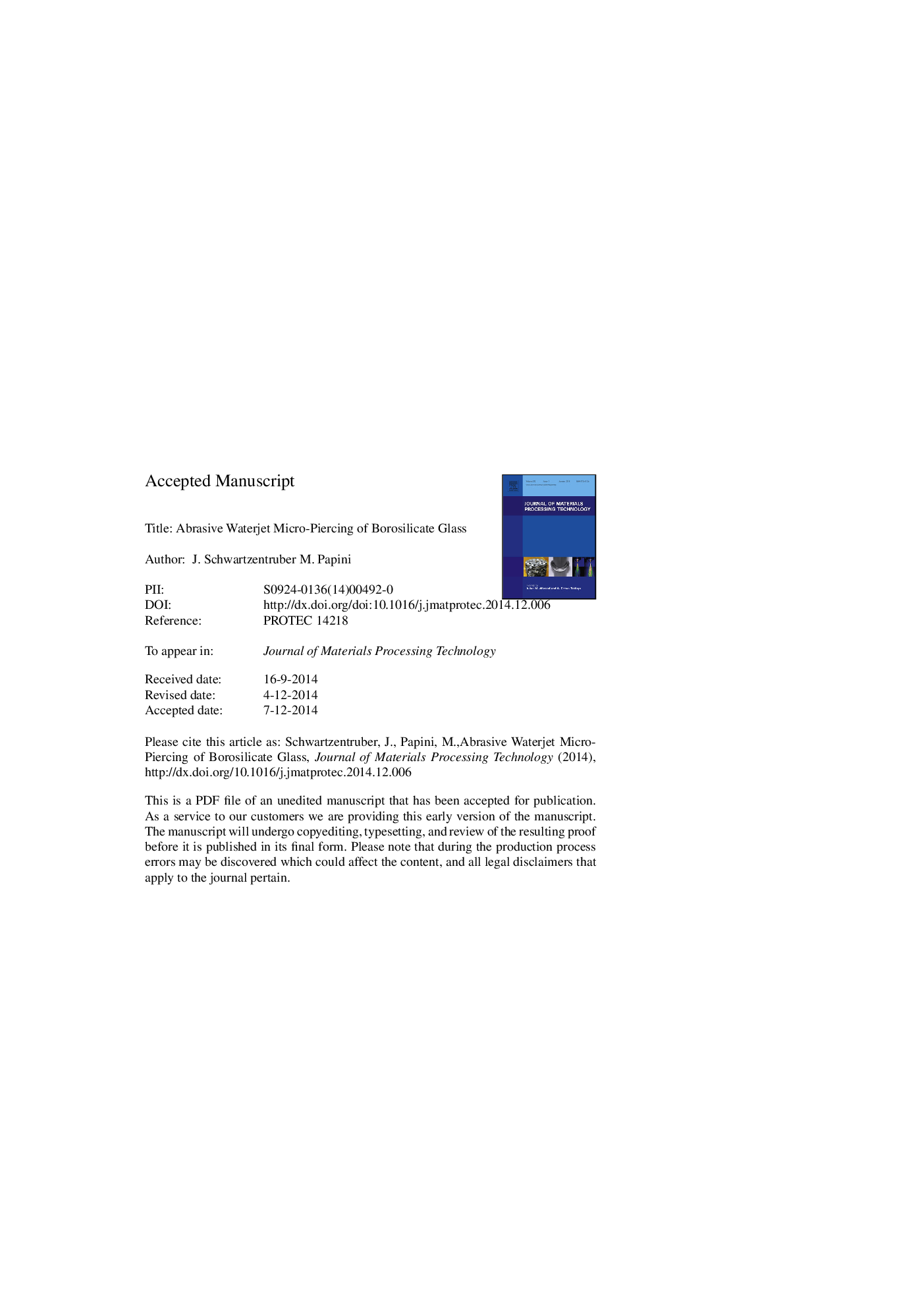| Article ID | Journal | Published Year | Pages | File Type |
|---|---|---|---|---|
| 7177162 | Journal of Materials Processing Technology | 2015 | 37 Pages |
Abstract
Abrasive water jet (AWJ) machining of delicate materials is difficult due to the large pressures that commonly result in large-scale chipping and other target damage. The damage occurs mostly during the initial piercing operations when the jet flow creates a large stagnation pressure at the jet to surface interface at the bottom of blind holes. This paper examined the parameters that affect target damage during piercing operations in borosilicate glass. The effects of stand-off distance (SOD), dwell time and pressure for three nozzles sizes were compared. A novel aspect of the study is the use of a prototype 254 μm micro-abrasive waterjet machining (μAWJM) nozzle. The results of a parametric analysis identified machining configurations that resulted in the reduction of chipping and hole size, and an improved hole circularity. This paper also proposed and assessed two methods for the reduction of exit pierce chipping using the μAWJM nozzle. A finite element analysis showed that the use of stacked borosilicate glass plates reduced the exit stresses associated with through piercing, thus reducing the amount of exit hole chipping. An μAWJM/AJM (micro-abrasive waterjet machining/abrasive jet machining) hybrid operation was also shown to considerably reduce exit chipping and exit hole size.
Related Topics
Physical Sciences and Engineering
Engineering
Industrial and Manufacturing Engineering
Authors
J. Schwartzentruber, M. Papini,
